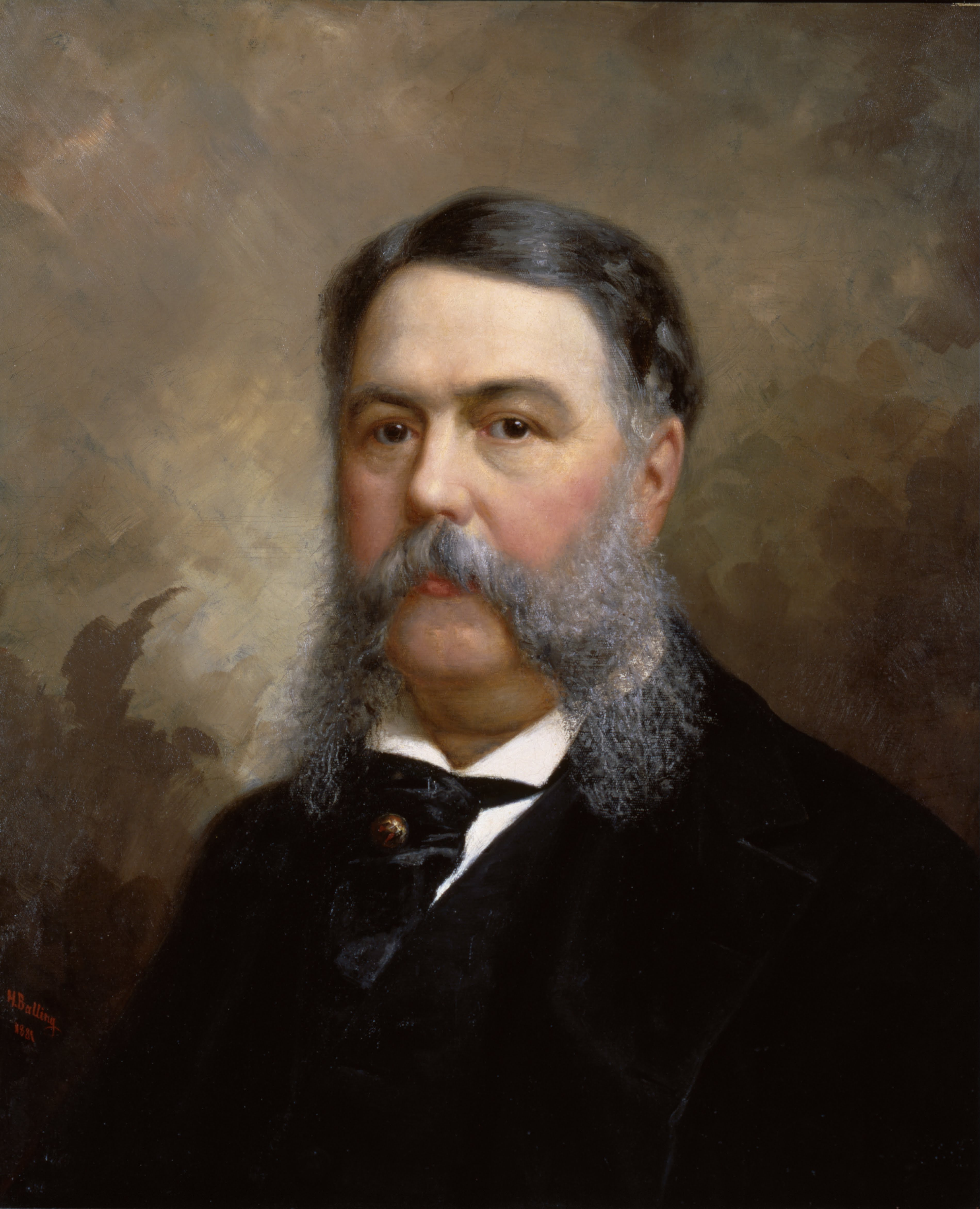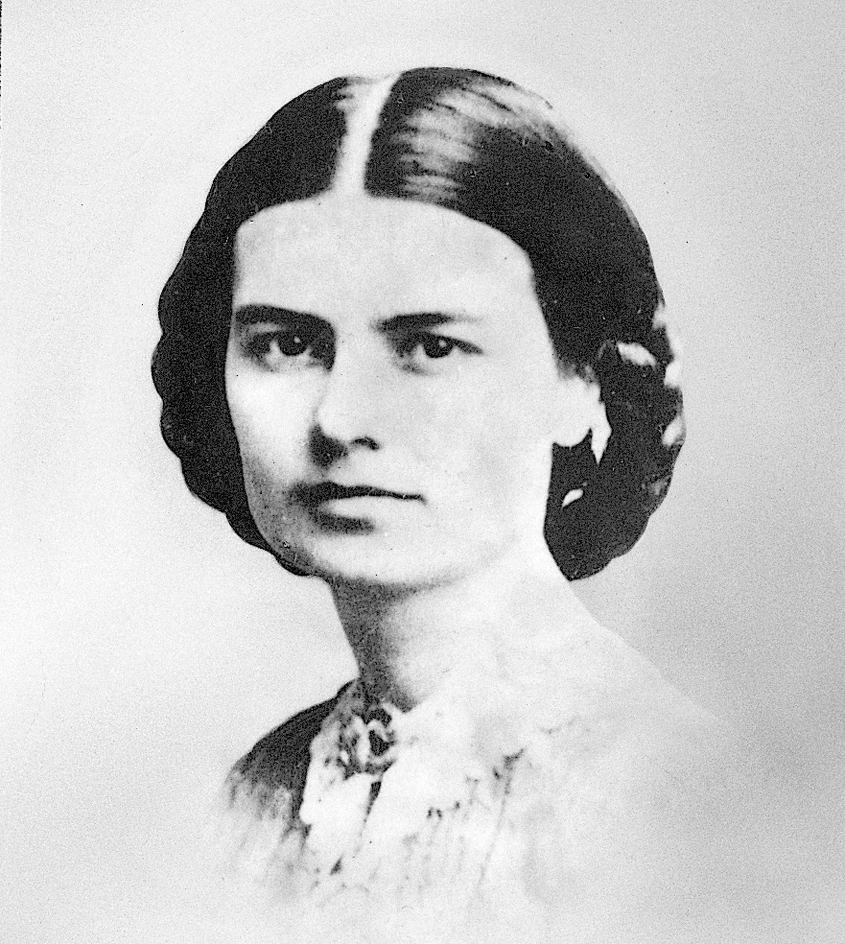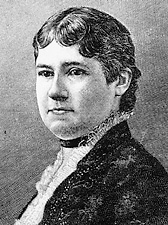Arthur, Chester Alan (1829-1886), became president after James A. Garfield died from an assassin’s bullet. Arthur was the fourth vice president to succeed to the presidency upon the death of a chief executive.

Arthur had risen rapidly in the Republican Party machine (organization) of New York City. In 1871, he became collector of the New York Custom House, then the largest single federal office in the United States. Widespread dishonesty in government occurred during this period, and Arthur used his office to reward Republicans and strengthen the party. These actions contributed to graft and waste in the custom house and led to his removal in 1878.
As president, however, Arthur surprised the nation by the honesty and efficiency shown by his administration. Protests by reformers about the dishonesty of previous administrations in the appointment of government officials caused Congress to pass the Civil Service Act. Arthur signed the law and administered it faithfully.
Arthur enjoyed fashionable surroundings and fine clothes. He also liked to entertain friends. Tall, ruddy, and handsome, Arthur was sometimes called the “Gentleman Boss.” He traveled widely as president, attending the opening of the Brooklyn Bridge in New York City and touring Florida and Yellowstone National Park.
While Arthur was president, the United States celebrated the 100th anniversary of the British surrender at Yorktown. New books included The Adventures of Huckleberry Finn and Life on the Mississippi by Mark Twain. Cities and towns throughout the United States and Canada began to adopt standard time after the railroads devised time zones to aid travelers.
Early life
Boyhood.
Chester Alan Arthur was born on Oct. 5, 1829, in Fairfield, Vermont. He was the first son in a family of six girls and three boys. His father, William, had come to the United States from Northern Ireland. The elder Arthur was a teacher and Baptist minister. Chester’s mother, Malvina Stone Arthur, grew up on her father’s Vermont farm. Like many other rural ministers, William Arthur seldom stayed long at any one post. The family moved to various villages in Vermont and upstate New York.
Chester was a good student and developed an early interest in politics. In 1844, at the age of 14, he supported Henry Clay, the Whig Party’s presidential candidate, and got into a fight with some young opponents of Clay. “I have been in many a political battle since then,” Arthur later recalled, “but none livelier, or that more thoroughly enlisted me.”
Legal career.
At the age of 18, Arthur graduated from Union College in Schenectady, New York. He began studying law and at the same time taught school. In 1854, he became a partner in a New York City law firm. Arthur soon became known as a defender of the civil rights of blacks. The young lawyer won a case in 1855 that established the right of blacks to ride on any streetcar in New York City.
Arthur’s family.
On Oct. 25, 1859, Arthur married Ellen Lewis Herndon (Aug. 30, 1837-Jan. 12, 1880), the daughter of a naval officer. The couple had two sons and a daughter, but the older boy died at the age of 21/2. Mrs. Arthur died about 10 months before Arthur was elected vice president, leaving him with their children, Chester, Jr., and Ellen.

Political and public career
Political growth.
In 1854, Arthur attended a meeting that led to the creation of a Republican Party in New York. Edwin D. Morgan, a Republican, became governor of New York in 1859, and Republican friends of Arthur’s got him a position on Morgan’s staff. Morgan soon named Arthur state engineer-in-chief with the rank of brigadier general. After the Civil War began in 1861, Morgan put Arthur in charge of outfitting the New York militia for federal service. The governor appointed Arthur inspector general of the militia early in 1862 and later that year appointed him state quartermaster-general.
Custom house collector.
During the late 1860’s, Arthur became an associate of Senator Roscoe Conkling of New York. Conkling was the leader of the New York Republican organization. To help this machine, President Ulysses S. Grant in 1871 appointed Arthur collector of the New York Custom House. The custom house, with more than 1,000 employees, was then the largest federal office in the nation. Officially, Arthur supervised the collection of import duties. But politically, he used the position to strengthen the Republican Party, largely by giving jobs to party workers.
Arthur soon became the leader of the party machine in New York City, and eventually became chairman of the Republican state committee. All the customs employees paid a portion of their salaries into Republican campaign funds. Some money collected for customs violations also ended up in the treasury of the Republican Party. Politicians in all parts of the country took similar advantage of this so-called spoils system (see Spoils system ). Reformers protested that such appointments resulted in incompetent and dishonest officials. After Rutherford B. Hayes became president of the United States in 1877, he issued an order forbidding government employees from taking part in the management of a political party.
Hayes appointed a commission to investigate the New York Custom House. The commission uncovered evidence of corruption, inefficiency, and waste. It also found continued involvement by the top custom house officials in Republican Party affairs. In 1877, Hayes asked Arthur and two chief aides to resign. They replied that they would not give up their offices until, as then required by law, the Senate had confirmed new appointees. Hayes suspended Arthur and one of the aides in 1878. Senator Conkling temporarily blocked the confirmation of new appointees. The Senate approved the new officials early in 1879.
Election of 1880.
At the Republican National Convention of 1880, Conkling’s machine supported former President Grant for a third term. However, the convention nominated Senator-elect James A. Garfield of Ohio. The delegates then nominated Arthur for vice president in hope of receiving support from Grant’s followers. Garfield and Arthur defeated their Democratic opponents, General Winfield Scott Hancock and former Congressman William H. English of Indiana (see Garfield, James A. (Election of 1880) ).
Opposition to Garfield.
Arthur soon found himself in the middle of a quarrel between President Garfield and Senator Conkling. Conkling demanded that Garfield consult him on all federal appointments in New York. He became furious when Garfield named James G. Blaine, Conkling’s chief political enemy, as secretary of state and another old political opponent as collector of the New York Custom House.
Conkling and Thomas C. Platt, the other New York senator, both resigned. They asked the New York Legislature to show its disapproval of Garfield by reelecting them to the Senate. Arthur shocked many political observers by campaigning for his friends, but they were defeated.
Assassination of Garfield.
Garfield never had a chance to enjoy the benefits of his victory over Senator Conkling. He was shot by Charles J. Guiteau on July 2, 1881, and died on September 19. Arthur took the presidential oath in his home in New York City at 2:15 a.m. the next day.
Arthur’s administration (1881-1885)
Life in the White House.
Arthur thought the White House looked like “a badly kept barracks,” and ordered it renovated. During his first months as president, he lived in the Washington home of Senator John P. Jones of Nevada. Arthur moved into the redecorated White House on Dec. 7, 1881. The president, whose wife had died in 1880, asked his youngest sister, Mrs. Mary A. McElroy, to serve as his hostess. She won wide praise for her warm hospitality.

About a year after Arthur became president, he learned that he was dying of a kidney disease called glomerulonephritis, or Bright’s disease. Arthur often suffered great pain but kept his illness a secret.
Civil service reform.
Most Americans regarded Arthur as a machine politician. They believed he would oppose civil service reform. But the assassination of Garfield led to a great popular demand for a better system of filling public offices. In response to this demand, Congress passed the Pendleton Civil Service Act. Arthur signed the bill on Jan. 16, 1883. He named attorney Dorman B. Eaton, the author of the bill, as chairman of the first Civil Service Commission.
The star route frauds.
During Garfield’s term, two of Arthur’s close political allies had been charged with fraud. They were accused of obtaining money by giving false estimates on the cost of operating postal star routes—that is, routes over which private contractors transported mail between designated postal facilities. Arthur renewed the prosecutions, and his administration worked vigorously for convictions. A jury acquitted the accused men after two trials. But the postal frauds were halted.
The fight for lower tariffs.
American consumers exerted pressure on the Arthur administration to lower import tariffs. In 1882, the president appointed a commission to study tariff rates. It urged sharp tariff cuts, but Congress ignored the commission and passed a law in 1883 that lowered rates only slightly.
Other legislation.
In 1882, Congress authorized $18,743,875 to be spent on improvements for waterways. Arthur knew many of the improvements were extravagant, and he vetoed the bill. But Congress passed the bill over Arthur’s veto.
The Edmunds Anti-Polygamy Act of 1882, aimed at the Mormons of Utah, made it illegal for a man to have more than one wife. Congress also passed a bill in 1882 to prohibit Chinese immigration for 20 years. Arthur vetoed the bill, saying it violated a treaty with China. Congress amended the bill to limit the suspension of Chinese immigration to 10 years, and it became law. Arthur also fought with some success to modernize the United States Navy.
Election of 1884.
Arthur worked hard to avoid major involvement in Republican Party affairs during his presidency. But in 1882, he was blamed for the defeat of Charles J. Folger, his secretary of the treasury, in the race for governor of New York. Folger lost to Democrat Grover Cleveland. High-ranking Republicans in the Arthur administration tried to build Republican strength in the South but achieved little.
Because of his illness, Arthur quietly discouraged friends from working to help him win the Republican presidential nomination in 1884. He received about a third of the votes for the nomination at the Republican National Convention in Chicago. Former Secretary of State James G. Blaine won the nomination, but he lost the presidential election to Cleveland.
Later years
Arthur returned to New York City after leaving the presidency. His health steadily declined, and he died of a cerebral hemorrhage on Nov. 18, 1886. Arthur was buried beside his wife in the Rural Cemetery at Albany, New York.
